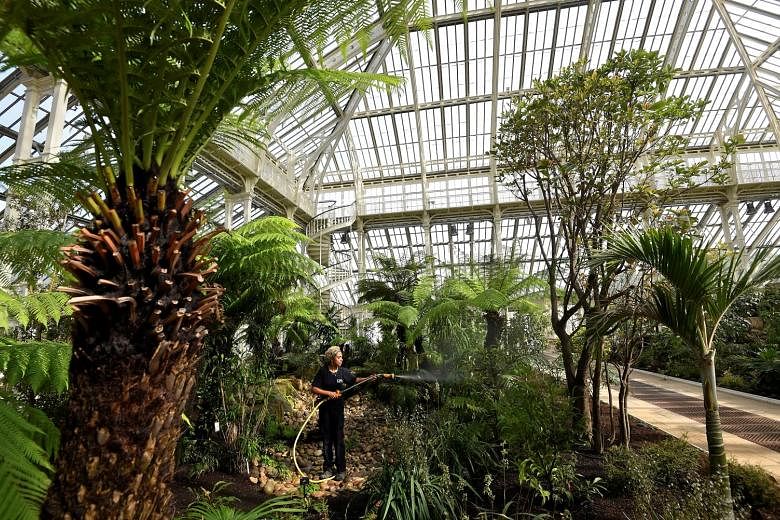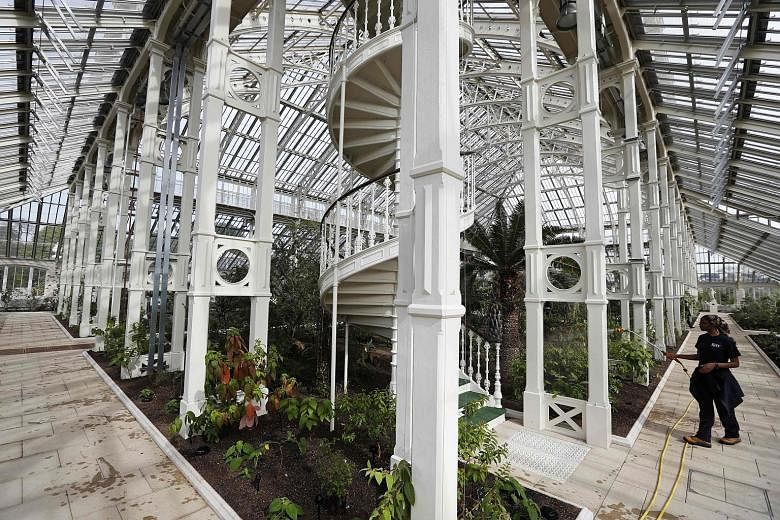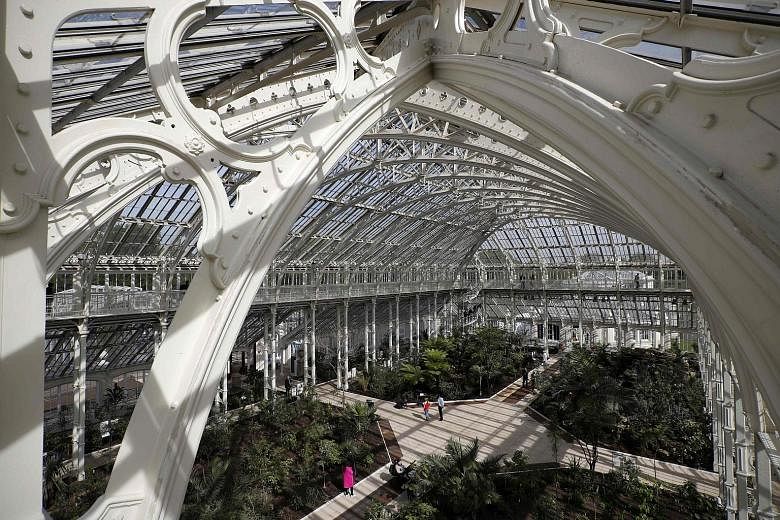LONDON • The glasshouse is large enough to park three jumbo jets, but it has been grounded for the past five years for a £41-million (S$73-million) renovation project.
Now, it can be a high-flier again, with last month's reopening of the glasshouse called Temperate House in Britain's famous Royal Botanic Gardens in Kew.
The gardens has completed the largest restoration project in its history. The glasshouse, which dates back to 1863, has 10,000 plants, including some of the world's rarest and most threatened species.
During the revamp, many plants had to be uprooted and relocated.
According to the Guardian, the glasshouse is also a sanctuary for certain species that have become extinct in the wild, including the cycad Encephalartos woodii, whose spikes once deterred foraging dinosaurs. It is now described as "the loneliest tree in the world" because no female partner has been found in the wild.
Another highlight is a Mauritian tree called Dombeya mauritiana that was thought to be extinct in the 1990s. But a 10m-tall survivor was found 15 years ago and cuttings were obtained.
The reopening was officiated by noted naturalist David Attenborough, who lives in the gardens' vicinity.
Speaking to the BBC at the relaunch, he said: "It's a breathtakingly beautiful space. These plants are wonderful and here they are, safe from peril.
"Kew does all sorts of things that nowhere else does. If you want to identify something, this is the ultimate authority worldwide. It's the most important botanical institute in the world and occupies a very special place in the science of botany.
"In some circumstances, the only way you can prove that a particular species is that species is to come to Kew and compare what you have with what is here.
"This is why people come from all over the world to the Kew Herbarium and to these great glasshouses."
The restoration, whose bill came in much higher than the original estimate of £34.3 million, was paid for with grants from the Heritage Lottery Fund and the government.
During World War II, Temperate House had suffered indirect structural damage, leading to leaks and corrosion that persisted despite repairs.
The five-year revamp will further enhance the appeal of Kew, whose 132ha of landscaped gardens and country estate was declared a Unesco World Heritage Site in 2003. The tourist attraction, which marked its 250th anniversary in 2009, already draws more than 2.1 million visitors every year.



